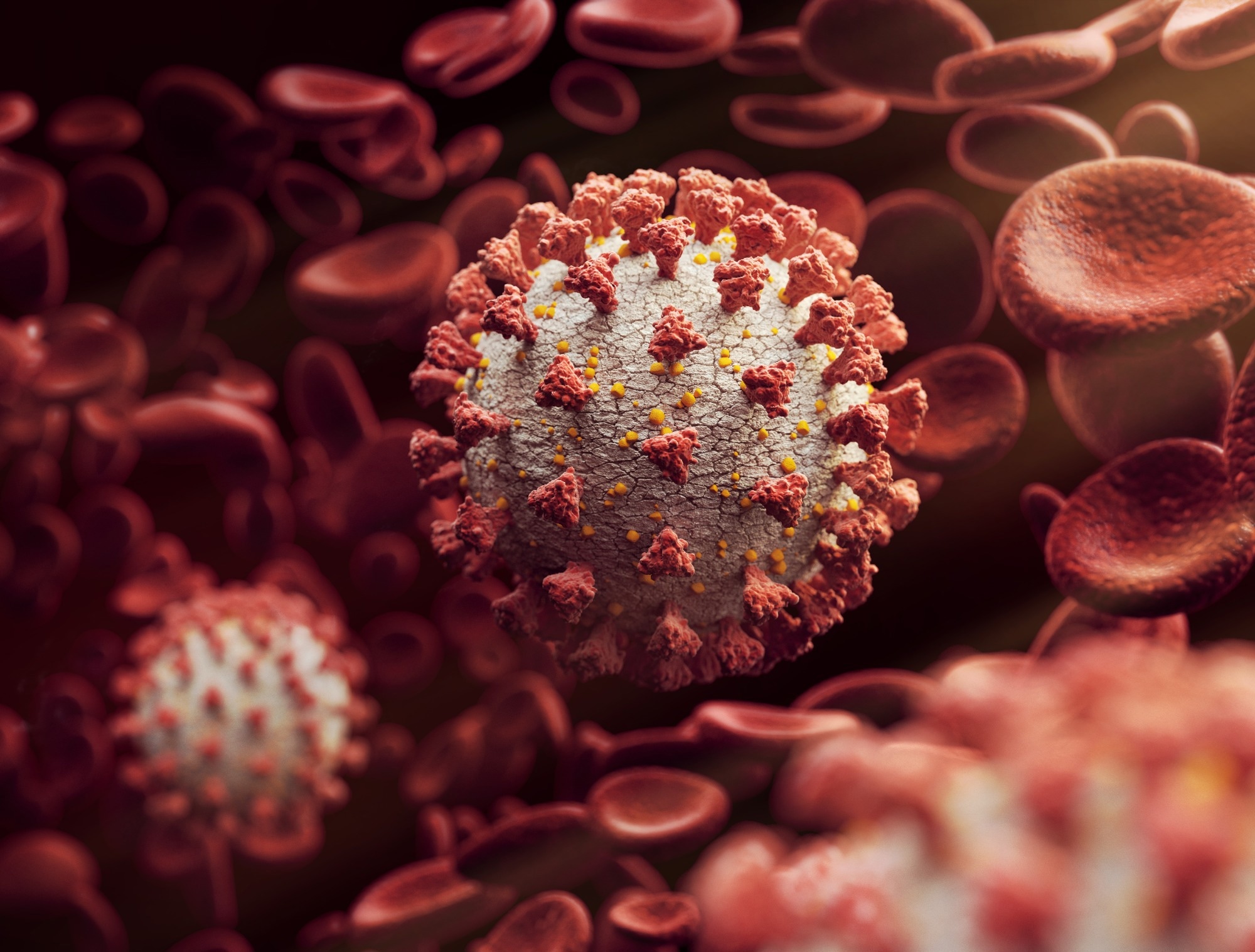Although the immune mechanisms that get activated in response to viral infections are well examined and understood, little is known about how viruses induce pain.
Despite pain being one of the early symptoms of a viral infection and the presence of viral receptors on nociceptors, the mechanisms through which viral infections induce pain remain unclear.
In a recent study published in Brain, Behavior, and Immunity, researchers examined the role of a viral signal called Stimulator of Interferon Genes or STING in the detection of viral nucleic acids and activation of pain responses in the nociceptors.
 Study: STING recognition of viral dsDNA by nociceptors mediates pain in mice. Image Credit: Radoxist studio/Shutterstock.com
Study: STING recognition of viral dsDNA by nociceptors mediates pain in mice. Image Credit: Radoxist studio/Shutterstock.com
Background
Nociceptors are free nerve endings or specialized sensory neurons that initiate the sensation of pain, and while it is known that nociceptors can detect harmful bacterial and fungal substances, whether these neurons can detect viruses remains unclear.
Typical immune responses are elicited when immune cells detect viral ribonucleic acid (RNA) or deoxyribonucleic acid (DNA) through toll-like receptors and activate pathways that trigger immune responses.
The presence of similar viral receptors on nociceptors suggests that these neurons can also directly detect viral nucleic acids and induce pain. However, although previous studies have shown that nociceptors express toll-like receptors that detect viral DNA, the role of the viral DNA in eliciting a pain response remains unclear.
About the Study
The present research focused on how double-stranded DNA from herpes simplex virus (HSV-1) activates pain responses in nociceptors.
The study utilized several methods involving murine models, behavioral assays, various drugs, cell cultures, and molecular techniques to investigate the pain responses to viral DNA and the cellular mechanisms that activate these pain responses in nociceptors.
Numerous murine models of different genetic backgrounds, including STING conditional knockout mice, were assigned randomly to other experimental groups.
The mice were injected with different reagents and drugs, including HSV-60, which is a 60 bp oligonucleotide containing herpes simplex viral DNA motifs. The injections were intraplantar, and the dosages varied based on the experiment.
A wide range of behavioral assays were conducted to study the pain behaviors in the mice after the injection of the HSV DNA and various drugs. The nocifensive pain behavior or response to the pain stimulus was measured based on paw lifting, licking, or shaking behavior after the injection. The Von Frey filament assay assessed mechanical sensitivity using different pressure levels applied to the hind paw.
Additionally, the Hargreaves assay measured the sensitivity to heat through recordings of paw withdrawal in response to heat. In contrast, the dry ice assay tested cold sensitivity by measuring the latency in paw withdrawal in response to dry ice application.
Lastly, the researchers conducted open field, rotarod, and sticky tape assays to evaluate spontaneous and forced locomotion, as well as sensorimotor coordination, respectively.
Furthermore, the study also included numerous cellular and molecular methods to study pain responses. These included recordings of pain responses to capsaicin injections, measurements of paw edema or swelling, and an enzyme-linked immunosorbent assay (ELISA) to measure the levels of interferons α and β in tissue samples.
The expression levels of specific genes in cultures of mice and human tissues in response to viral DNA were measured using quantitative and reverse transcription polymerase chain reaction. In contrast, the expression of proteins and genes in specific tissue sections was visualized using immunofluorescence and in situ hybridization.
The researchers also used ex vivo skin-nerve assays to record the nerve responses from isolated skin samples. At the same time, the intracellular calcium levels from cultures of dorsal root ganglion neurons were assessed using calcium imaging.
Major Findings
The study found that nociceptors can directly detect viral nucleic acids, especially cytosolic double-stranded DNA from viruses such as HSV-1, which subsequently triggers the activation of STING protein in the dorsal root ganglion neurons, resulting in pain response and heightened sensitivity to touch. This response was also found to be independent of ongoing inflammation and immune responses.
The study also showed that the chemical CAY10748, which is an STING agonist, could induce these pain responses and relied on the transient receptor potential vanilloid 1 (TRPV1) ion channel to cause the pain responses.
Furthermore, mice that lacked either STING or TRPV1 in the nociceptors did not experience high levels of HSV-1-induced pain, indicating that pain experienced during viral infections was dependent on nociceptors detecting viral DNA.
The researchers also confirmed that the activation of STING pathways by double-stranded viral DNA and CAY10748 was not dependent on inflammation or the involvement of interferons.
Furthermore, peripheral denervation or treatment with gabapentin, which is used to treat nerve pain and seizures, resulted in a decrease in the pain response, supporting the conclusion that the pain originated from the direct activation of pain neurons and not due to the inflammation.
Conclusions
Overall, the study highlighted the novel mechanisms through which nociceptors detect viral DNA, leading to pain responses through the activation of STING and interactions with TRPV1 ion channels.
The findings suggested that targeting STING in the sensory neurons could help manage pain during viral infections. The researchers believe that these findings have important implications for not just HSV-1 but alsocoronavirus disease 2019 (COVID-19).
Journal reference:
-
Lee, S. H., Bonifacio, F., Prudente, A. S., Choi, Y., Roh, J., Adjafre, B. L., Park, C., Jung, S. J., Cunha, T. M., & Berta, T. (2024). STING recognition of viral dsDNA by nociceptors mediates pain in mice. Brain, Behavior, and Immunity, 121, 29–42. doi:10.1016/j.bbi.2024.07.013. https://www.sciencedirect.com/science/article/pii/S0889159124004823